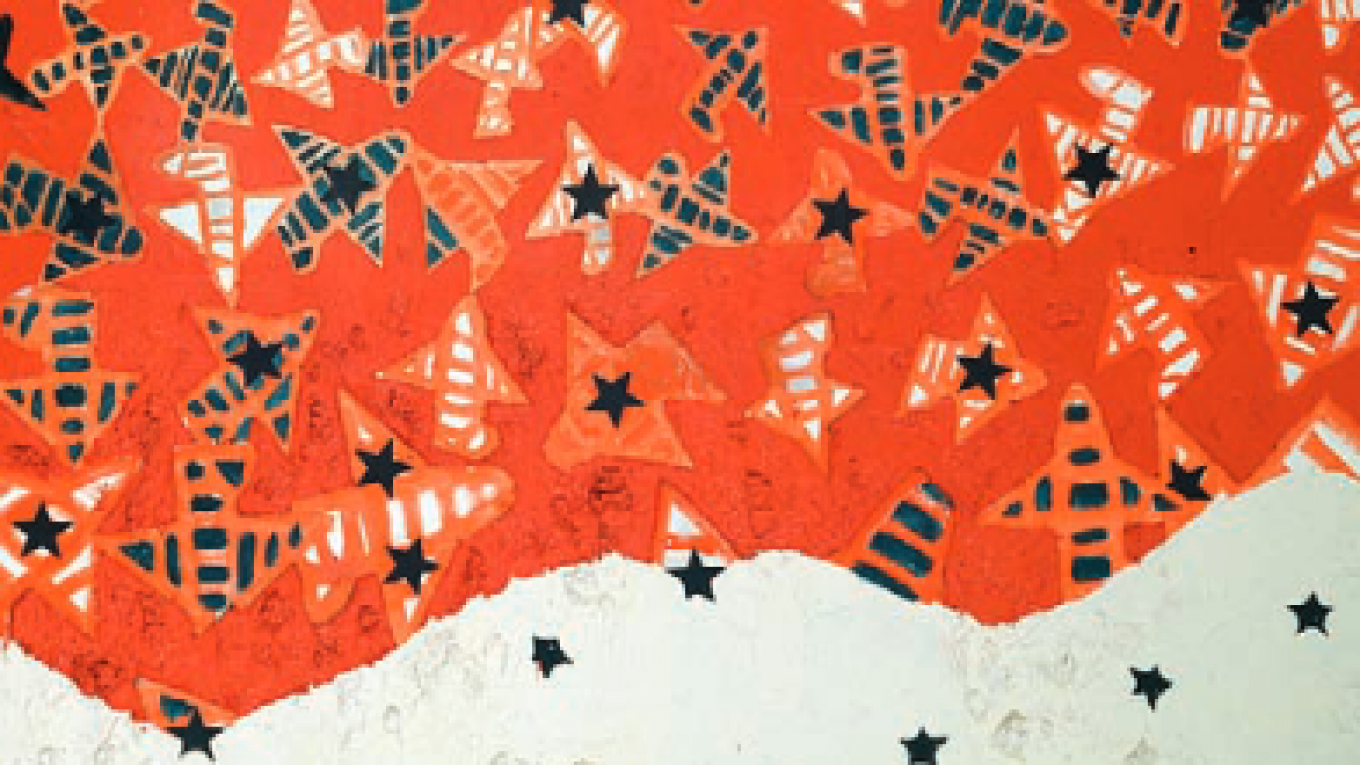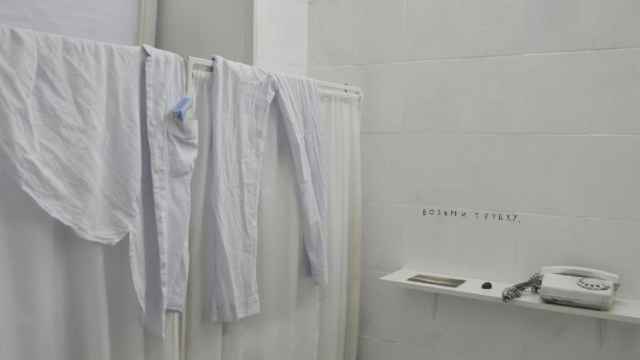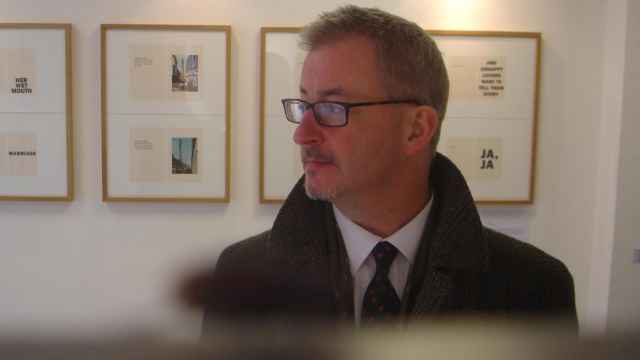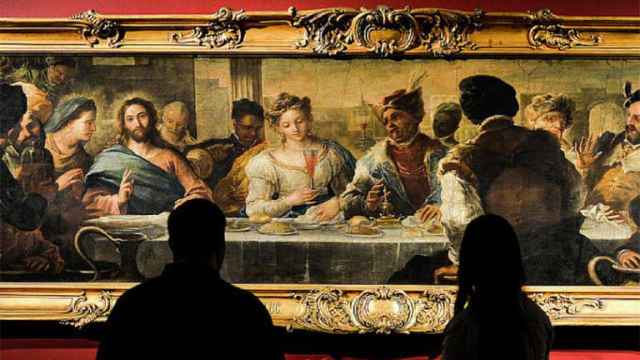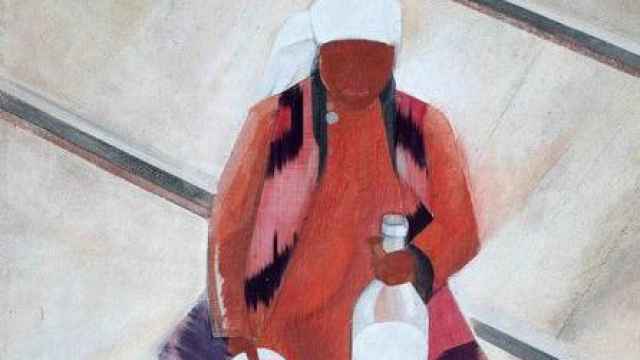The Moscow Museum of Modern Art has
opened a retrospective exhibition of works by Valery Aizenberg,
an acclaimed artist from the 1980s who remains one of the most
influential figures in the Russian modern art scene.
The
show features over 100 works created by Valery Aizenberg in the last
40 years, displayed across the four floors of the Museum.
Visitors are invited to descend from the top floor down to the
first. In the process, they follow the artist’s own life
journey — from Ukraine to the U.S. — and his creative
development, which is more a play of concepts and formats than a
straightforward path to find his artistic self.
However,
the structure of the exhibition is not chronological. It flows in
accordance with the artistic concepts and historical context.
The spirit of the retrospective is an installation called
“Intellectual Forest,” which allows the viewer to wander around
the dense woods of the artist’s unconsciousness, pulled back to
reality by multiple cultural references, direct quotes and striking
images.
A Visual Forest
The show itself is a forest of
paintings, objects, and performances — text, video and photo. Most
of the pieces do not stand alone. They are groups arranged in series.
Some works, such as “Maslenitsa,” “Oka River,” and “Snow
Flies,” are curated to capture the rhythm of the compositions
produced by colors, lines and texture. Here you begin to understand
the point of the Forest. It’s not the painting itself that
Valery Aizenberg is interested in, but the context his series
create within the art space as the pieces are either installed away
from the walls or hanging from the ceiling.
“It was
Aizenberg’s spectacular idea to place the pictures this way.
Installation is one of his art strategies,” Leonid Bazhanov,
curator of the exhibition, told The Moscow Times. “He wanted to
show the pieces from an unexpected angle.”
The
installation lets you see a painting from the front and back and
compare the original names of the pieces with the official titles on
the museum plates. The visitor literally looks at the art space
between the paintings by moving between hanging artworks and mentally
“migrating” through the art series.
Escapism
A
theme of escapism, which Valery Aizenberg calls “fly,” runs
throughout the installation. Alongside the “flying”
paintings, the artist’s constantly repeating images of stars
(“Danae and the Acid Rain”) and airplanes (“Asphodels”
and “Airhive”) create a strong theme of striving for freedom.
One of the most significant works of the retrospective is Aizenberg’s
most recent “Vulgarians.” In the installation, cats and flies
hover around a Magritte-like self-portrait. It is an illustration
of absolute freedom from substance and context: an artist freeing
himself from the physicality of pictorial art.
Aizenberg
captures the viewer’s imagination with a series of video art
performances created as part of his ESCAPE series. These are the
most conceptual works displayed in the exhibition. In “The Eye”
the artist scratches the image of an eye on paper with a knife and
provokes a deep emotional response. The “Red Welder” deals with
the transformative power of art.
Aizenberg’s conceptual
journey ends with his series “Malevichism.” This is not a set of
direct quotations from the avant-garde artist Kazimir Malevich,
but an attempt to bring Malevich into the artist’s personal
space and realm of perception. Bazhanov explains: “Modern Russian
artists are regularly engaged in a dialogue or polemics with
Malevich. For some it’s a tribute to a style, for others its a way
to focus their artistic obsession.”
Visitors become part of
the context the moment they enter an installation. In the “Endless
Ukrainian Landscape with Water Tower and Shadow,” Aizenberg
explores the idea that the viewer can never fully comprehend the
artist’s world. To see what is on the paintings, you have to strain
to look through a small opening.
This innovative approach
to painting and the ability to “migrate” into different genres
has given Valery Aizenberg the reputation of one of the most
profound conceptual artists of our times. The show will run until
March 5.
A Message from The Moscow Times:
Dear readers,
We are facing unprecedented challenges. Russia's Prosecutor General's Office has designated The Moscow Times as an "undesirable" organization, criminalizing our work and putting our staff at risk of prosecution. This follows our earlier unjust labeling as a "foreign agent."
These actions are direct attempts to silence independent journalism in Russia. The authorities claim our work "discredits the decisions of the Russian leadership." We see things differently: we strive to provide accurate, unbiased reporting on Russia.
We, the journalists of The Moscow Times, refuse to be silenced. But to continue our work, we need your help.
Your support, no matter how small, makes a world of difference. If you can, please support us monthly starting from just $2. It's quick to set up, and every contribution makes a significant impact.
By supporting The Moscow Times, you're defending open, independent journalism in the face of repression. Thank you for standing with us.
Remind me later.


